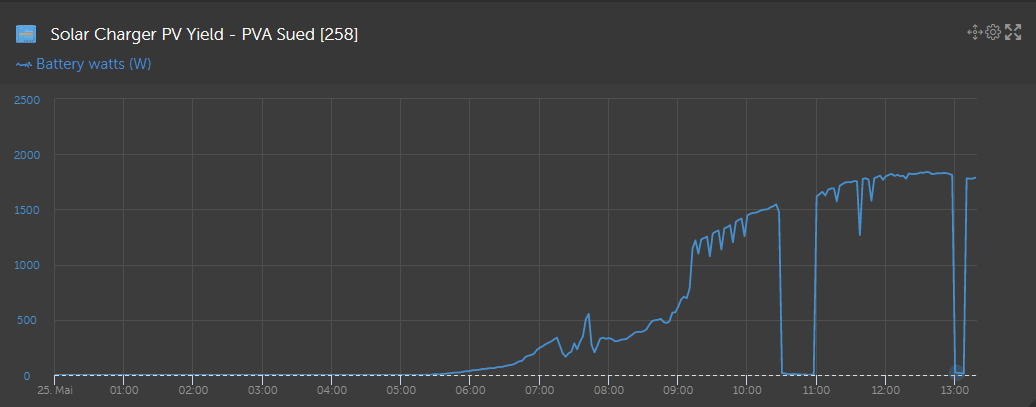Hi
i running a ESS (MultiGrid 48/3000 FW459, VenusGX FW v2.31with EM24) with AC Coupled third party PV Inverters (via ET340 and ET112) and a Smart Solar 150/35 v1.39 and a BYD B-Box 5.0kWh. (DVCC enabled, SVS disable, Smartsolar has BMS controlled)
The DC Coupled PV system is oriented south and could be enlarged by approx 900 Wp, since currently only 1,8kWp is installed. Maximum charge power to battery is limited at 2000W fixed due to the 35 Amps - i know ;).
In the ESS Settings I enable " Feed-in excess solar charger power" but soon i discovered the the typical behavior of the system was to charge from the East oriented AC Coupled inverters, which means, the the battery is full, sincce there is enough excess. But the south orientated DC coupled PV System was dearted by over 50% due to battery being at SOC 100%, even with the enable option of "feedin excess DC Power". Over have of the production of the south oriented DC coupled PV is derated (see pic attached, redline is potential solar production).
To prove my hypotheses i changed the ESS Setpoint to activly discharge the battery into the grid, thus a lower SOC than 100% is realized. this enables the BMS controlled Smart Solar to use the full potential of the PV system. (previously 340W production goes up to 900W Production).
See my screenshots and notes
ESS Feed-in excess solar charger power - not full potenial.pdf
Conclusion:
I presume that the Mutligrid doesnt discharge/feedin as much power as the full potential of solar available on the DC side.
I would presume that the voltage Gap between SmartSolar and Multiplus isn't high enough for Multi to discharge the battery more but to keep it at 100% and though making it possible for the SmartSolar to feedin more of his potential solar power.
So propably i will not add any more Modules to the Smart Solar or install another SmartSolar, but install another PV Inverter AC coupled.
If anybody has the same Issue please let me know!
If anybody has an idea how to optimize the use of the DC coupled Solar to feed into the grid, please let me know! I thought already of an external PLC writing the ESS Setpoint into the Modbus register, to actively reduce the SOC during the daytime, to make more use of the DC coupled PV System.
THX
BR
Ossi






